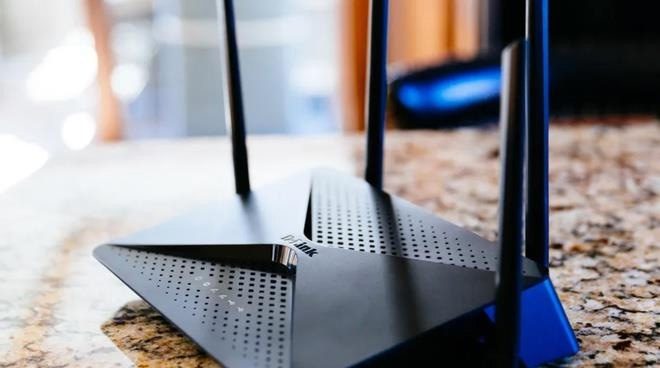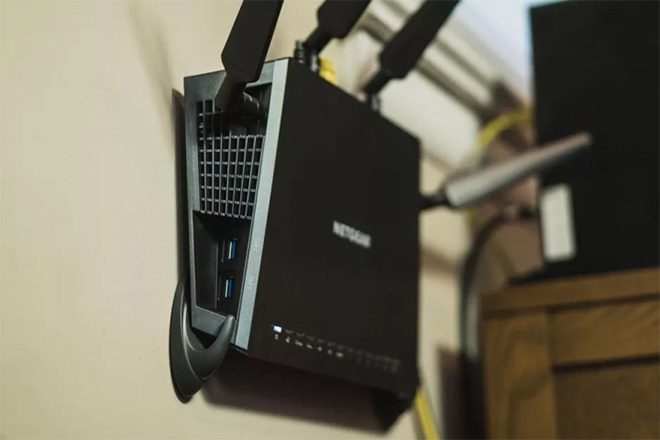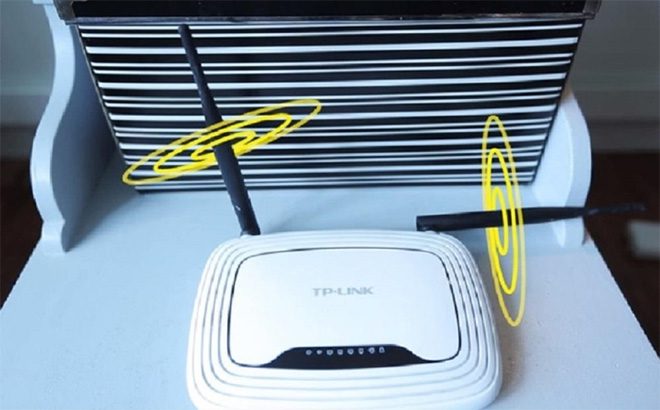A stable Internet connection is crucial as more people tend to work from home. In addition to the speed of the connection, the placement of the Wi-Fi router also affects the signal and Internet access speed.
Depending on the layout of the house, users need to choose the optimal location for their Wi-Fi router. Below are some tips on selecting the right type of router and positioning it to ensure a stable Wi-Fi signal and Internet access speed.
Choosing Between a Standard Router or Mesh Wi-Fi?
First, users need to select the optimal type of router based on their home layout and size. According to CNET, a single router is sufficient for homes with an area of up to 150 square meters. However, if the current router is outdated, users should consider upgrading to newer models that support Wi-Fi 5 (802.11ac) or Wi-Fi 6 (802.11ax) with dual bands (2.4 GHz and 5 GHz).

Users need to place the router in an optimal location to ensure a stable signal. (Image: CNET).
Besides the 2.4 GHz band, the 5 GHz band can enhance connection speed and bandwidth; however, its coverage range is less than that of the 2.4 GHz band. Therefore, choose router models that support both bands for flexibility.
For larger multi-story homes, users can opt for a mesh Wi-Fi solution. Essentially, a mesh Wi-Fi system consists of two or more devices, including a main router and one or more satellite devices placed in areas with weak Wi-Fi signals. They work together to create a single Wi-Fi network covering the entire house.
When moving from the ground floor to the upper levels, users do not need to manually connect to the nearest router for a stronger signal. Instead, the mesh system automatically switches, ensuring that the home has virtually no dead zones for Wi-Fi.
Optimal Router Placement Locations
After purchasing a router, users need to choose the right placement for the device. This is a crucial factor in ensuring that the signal and Internet access speed remain stable, even when used in different areas of the house.
First, Wi-Fi routers emit signals in all directions. If the device is placed in a corner of the room, most of the signal will be transmitted outside the house. Therefore, move the router to more open areas, avoiding overly enclosed spaces, and position it as close to the center of the house as possible. Moving the router may require longer cables, but users should consider repositioning it for a more stable signal.

Mounting the Wi-Fi router on the wall is an optimal solution for coverage. (Image: CNET)
Next, Wi-Fi signals tend to propagate downward. Therefore, mount the router on the wall if you want to save space and position it as high as possible to optimize coverage. If wall mounting is not feasible, place the router on top of a bookshelf or a wall-mounted shelf.
The signal emitted from the Wi-Fi router is electromagnetic waves; placing conductive metal objects (like cans, cutlery, or keychains) near the router will obstruct the signal, reducing Wi-Fi speed. Keep these items away from the router to improve the signal.
According to CNET, one device that should be kept away from the router is the microwave because it also operates on the 2.4 GHz band. Placing the router near a microwave can easily cause frequency interference, affecting the signal and network speed. Additionally, avoid placing the router near a TV or computer monitor, as the magnetic field will impact the Wi-Fi signal.
Some routers today come equipped with internal antennas, while others have external antennas that users can adjust to direct the signal. If using a router with two antennas, place them perpendicular to each other (one vertical and one horizontal) for the widest Wi-Fi coverage.

If the Wi-Fi router has two antennas, place them perpendicular to each other (one vertical and one horizontal) for the widest Wi-Fi coverage. (Image: Vox)
If you want a strong signal in a specific location, direct all the antennas of the router towards that area. In cases where the router has only one antenna, placing it vertically is the optimal solution.
If you are unsure which locations have weak Wi-Fi signals, users should install software like NetSpot to map the Wi-Fi signal. However, this process can be time-consuming as it requires entering parameters and placing the computer at various locations in the house to measure network signal strength.





















































